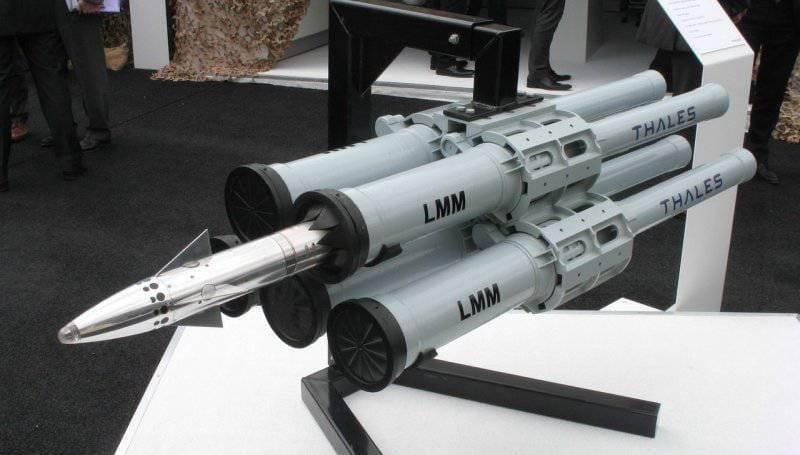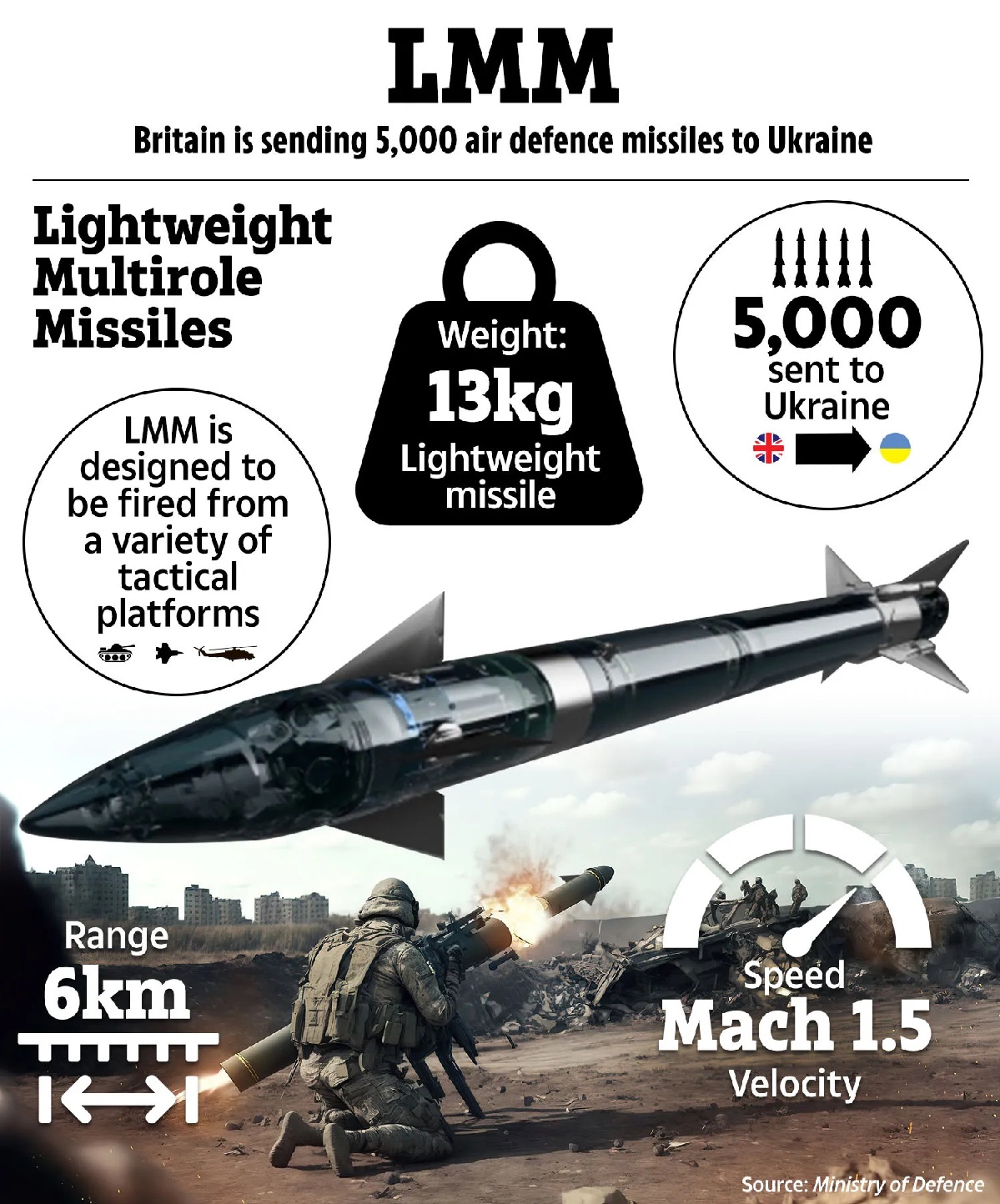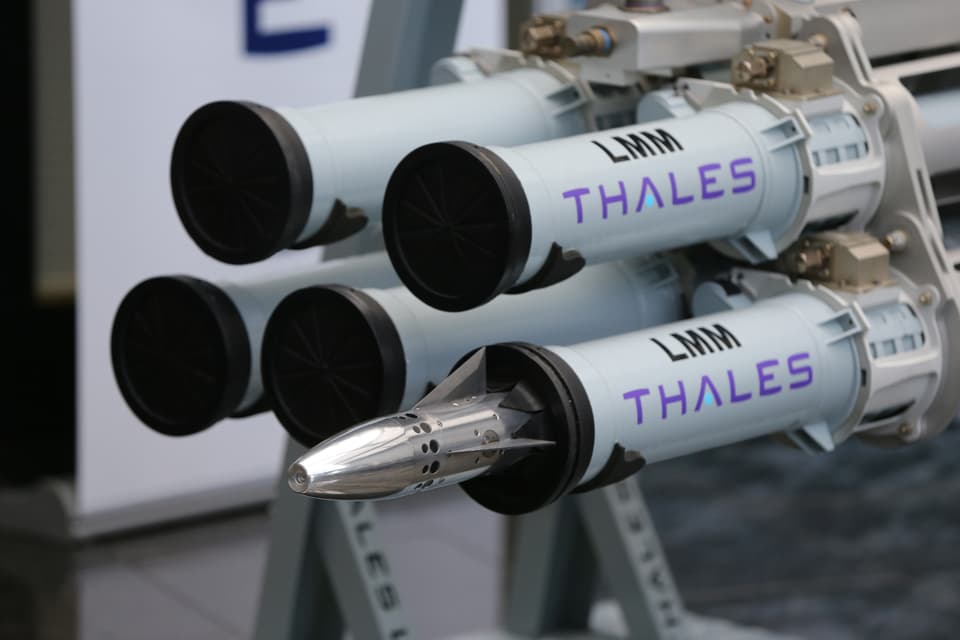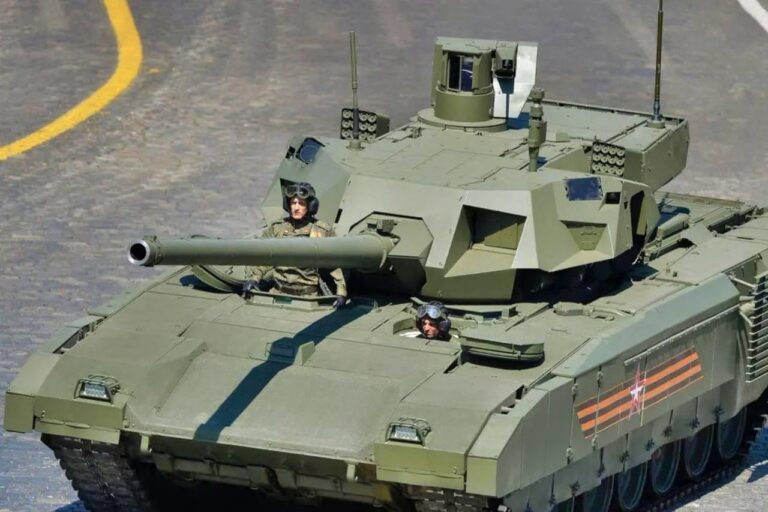
Thales LMM
Why the India–UK Thales LMM deal matters
India has approved a £350 million buy of Thales Lightweight Multirole Missiles, or Martlet, plus £250 million for naval electrification. The India-UK Thales LMM deal not only benefits the Indian Army in the near term but also paves the way for deeper collaboration on complex weapons. Reuters reports the contract’s value, the Belfast jobs impact, and the broader partnership announced during Prime Minister Keir Starmer’s Mumbai visit.
What India gets: a versatile, low-collateral weapon
Thales rates LMM at 13 kg, over a 6 km range, above Mach 1.5, with laser beam-riding guidance for multi-domain use. That design keeps collateral damage low against drones, small boats, light armour and low-flying aircraft in crowded environments. Consequently, the India–UK Thales LMM deal adds a flexible, affordable counter-UAS and surface-attack option to India’s SHORAD.
Platform options and operational fit
Because LMM is air- and surface-launch capable, India can fit it on helicopters, vehicles, and ship mounts. The deal supports a layered defence: mobile teams defeat drones and loitering threats, while air units strike swift boats. These integrations let commanders react quickly and reduce collateral risk across cluttered littoral and urban environments. Open sources cite Royal Navy Wildcats carrying Martlet and Sea Venom together, highlighting joint littoral utility.

Relationship signal: beyond a one-off buy
London frames the LMM sale as a foundation for deeper complex-weapons ties and a practical push into electric propulsion for Indian ships. The India–UK Thales LMM deal arrives as New Delhi shifts from Russian kit, with SIPRI tracking the pivot to Western suppliers.
Jobs, supply resilience, and Ukraine link
The UK says the LMM contract secures over 700 jobs in Northern Ireland and uses production lines already supplying Ukraine. As a result, the India–UK Thales LMM deal draws on a hot production base, shortening ramps and reducing programme risk.
Technical contrast: LMM vs Starstreak
Starstreak flies beyond Mach 3 and releases three dart penetrators for hard-kill effects. LMM sacrifices raw speed for multi-mode flexibility and precise laser beam-riding guidance. So, the India–UK Thales LMM deal adds a surgical, multi-target tool, while Starstreak delivers a premium SHORAD punch. Both missiles are built at Thales Belfast, leveraging an experienced and scalable production line.
Maritime ripple effects: Sea Venom milestone
The Royal Navy has declared IOC for MBDA’s Sea Venom on Wildcat helicopters during HMS Prince of Wales’ Indo-Pacific deployment. Sea Venom delivers corvette-class ship-kill punch and pairs with Martlet to defend against swarms of swift attack craft. This context shows how the India–UK Thales LMM deal aligns with UK missile ecosystems India may adopt for naval aviation.

Industrial cooperation: electric propulsion as a force multiplier
Electric-propulsion cooperation promises quieter signatures, better efficiency, and flexible power management for sensors and directed-energy systems. The India–UK Thales LMM deal shows that both countries are committed to working together on developing propulsion and weapons, rather than just making one-time purchases, especially
Strategic takeaway for India
India gains a quick-to-field, precision multirole missile that boosts counter-UAS, littoral defence, and short-notice tactical strike options. Moreover, the India–UK Thales LMM deal deepens a bilateral track, complementing India’s wider Western pivot while preserving procurement agility. SIPRI’s long-run transfer data reinforces this trajectory, highlighting steady shifts in supplier mix and growing reliance on Western systems.
References
- Reuters: The UK signs a £350m missile deal with India. Reuters
- Thales: lightweight multirole missile (LMM) specs. Thales Group
- SIPRI – Trends in International Arms Transfers, 2024 (Fact Sheet). SIPRI
- UK MoD– Sea Venom IOC announcement. Defence Equipment & Support







